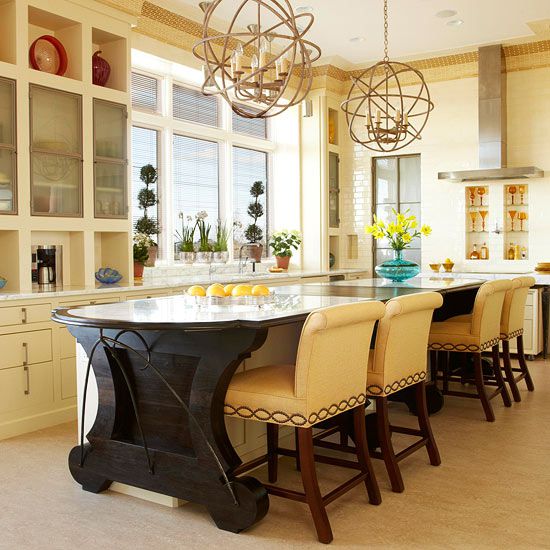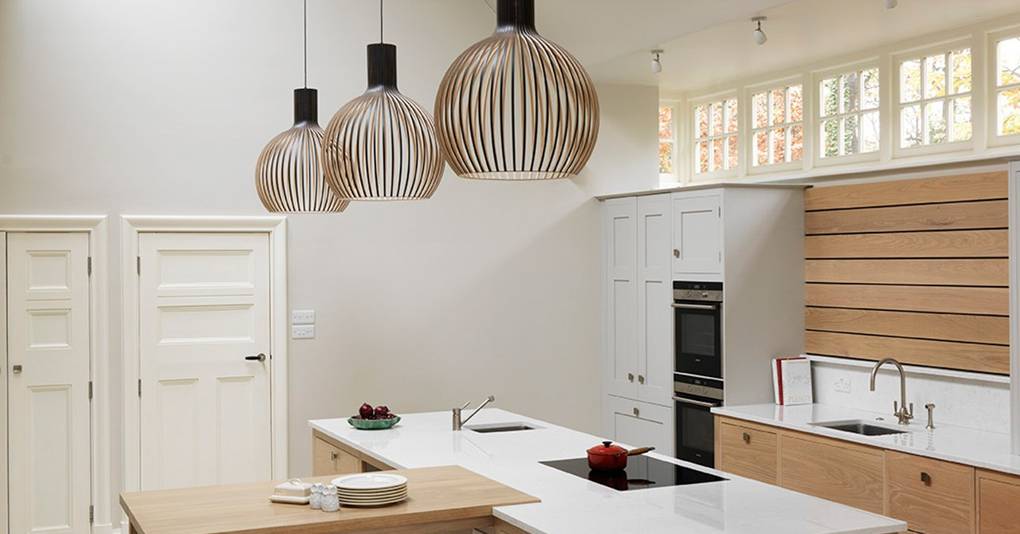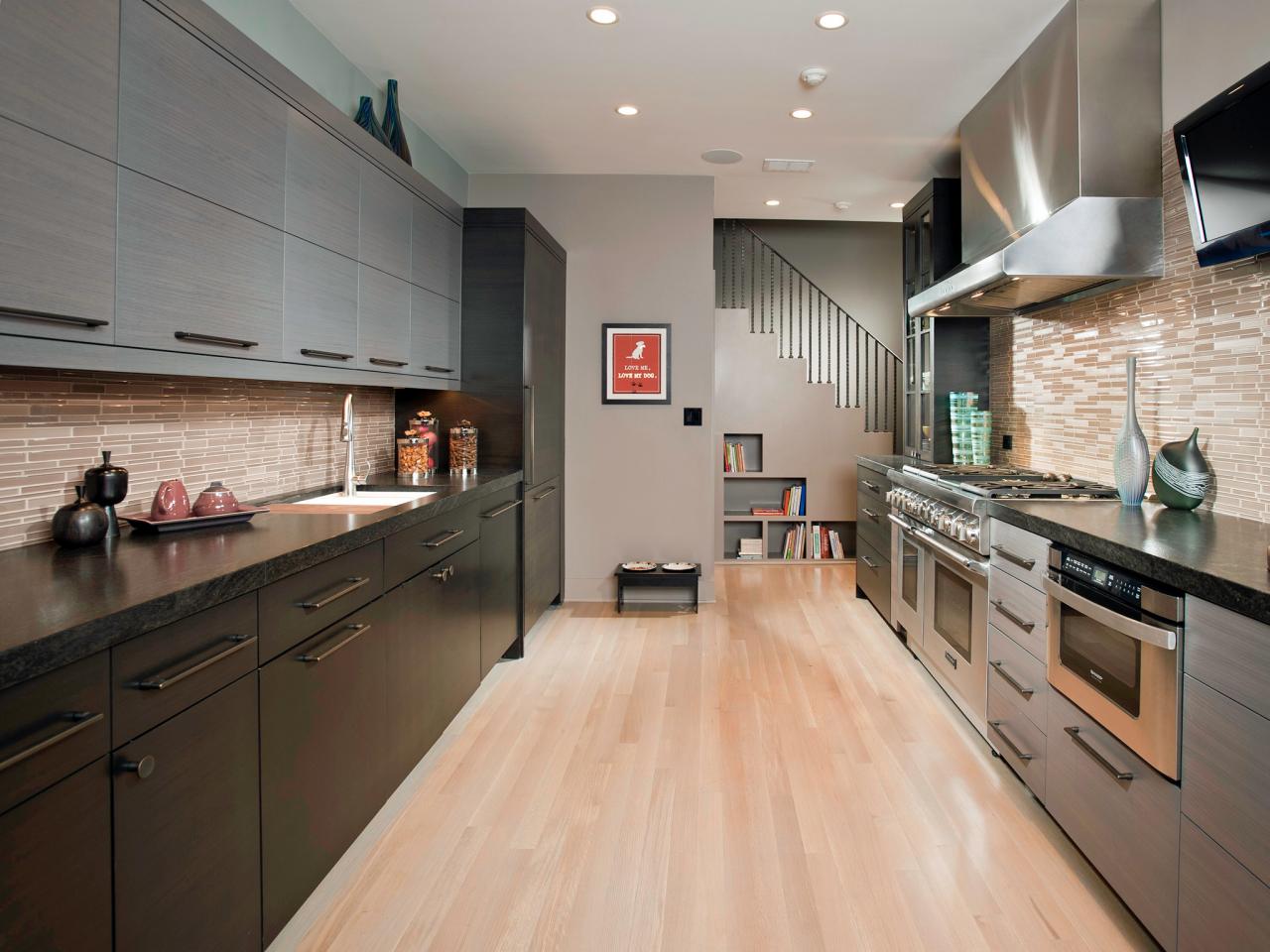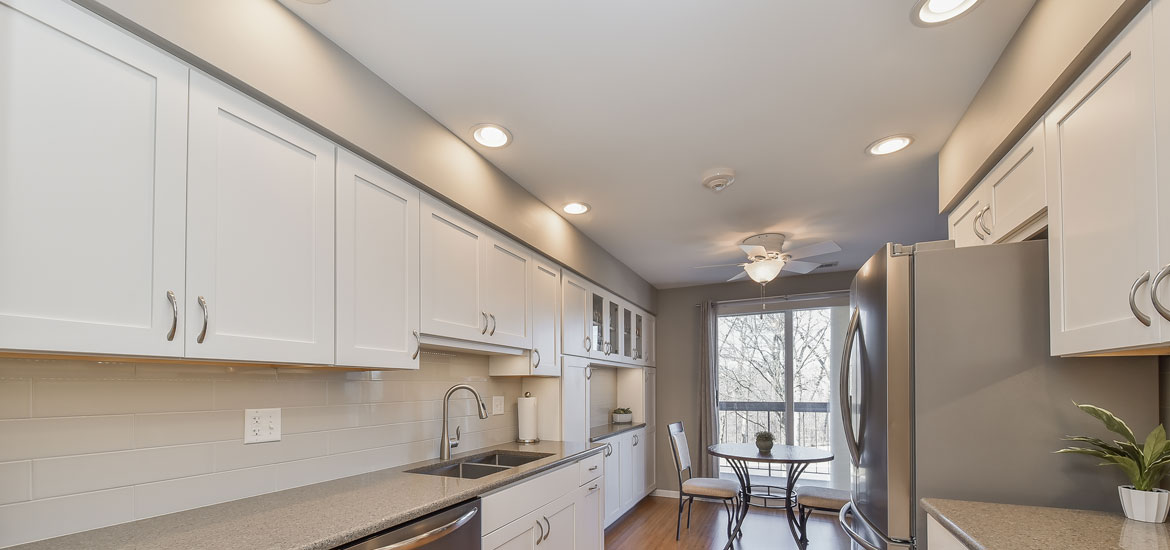Updating the lighting in an old house’s kitchen can be both a challenge and an opportunity. Kitchens in older homes often have unique architectural features, smaller spaces, or irregular layouts that require thoughtful lighting design. The goal is to illuminate the kitchen effectively while preserving the charm and character of the space. This often involves blending modern lighting technology with fixtures and styles that complement the home’s vintage aesthetic. Whether you’re working with a century-old farmhouse or a mid-century modern bungalow, choosing the right kitchen lighting can make a significant difference in both functionality and ambiance.
One of the first considerations in updating kitchen lighting in an old house is the existing wiring. Older homes may have outdated or insufficient electrical systems, which can limit the types of fixtures that can be installed without upgrading the wiring. Before selecting any lighting, it’s important to assess the electrical infrastructure and, if necessary, bring it up to code. This might involve adding new circuits, installing ground fault circuit interrupters (GFCIs), or even rewiring certain parts of the kitchen. While this can be an added expense, it ensures that your kitchen is safe and capable of supporting modern lighting fixtures.

When it comes to selecting fixtures, it’s important to consider the architectural style of the home. For example, in a Victorian or Craftsman-style house, you might opt for period-appropriate fixtures such as pendant lights with stained glass shades, or brass chandeliers with intricate detailing. In a mid-century modern home, sleek, minimalist fixtures in geometric shapes and bold colors might be more appropriate. The key is to choose lighting that complements the home’s original design while also providing adequate illumination for modern kitchen tasks.
Layered lighting is essential in any kitchen, but it’s especially important in older homes where natural light may be limited. Layered lighting involves using a combination of ambient, task, and accent lighting to create a well-lit and functional space. Ambient lighting provides general illumination and can be achieved with ceiling-mounted fixtures, such as flush-mount or semi-flush-mount lights. Task lighting is focused on specific work areas, such as over the countertops, sink, or stove, and can be provided by under-cabinet lights, pendant lights, or recessed lights. Accent lighting is used to highlight architectural features, such as a decorative backsplash or a vintage range, and can be accomplished with wall sconces or track lighting.

Incorporating natural light into the kitchen design is another important consideration, especially in an old house where windows may be small or limited. Maximizing natural light can make the kitchen feel more spacious and inviting. This can be achieved by keeping window treatments minimal, using reflective surfaces like glass tile or polished countertops, and strategically placing mirrors to bounce light around the room. If the kitchen lacks windows, adding a skylight or solar tube can be a great way to bring in natural light without altering the exterior of the home.
Choosing the right color temperature for your kitchen lighting is crucial in an old house. Warm white light (2700K to 3000K) is often the best choice for creating a cozy and inviting atmosphere that complements the warm tones of natural wood and other traditional materials. However, in areas where task lighting is needed, such as over the countertops or sink, a slightly cooler color temperature (3500K to 4000K) can provide better visibility without feeling too harsh. It’s important to balance the different light sources so that the overall effect is cohesive and comfortable.

In older homes, kitchens often feature unique architectural details such as exposed beams, brick walls, or original cabinetry. Highlighting these features with accent lighting can enhance their beauty and add to the character of the space. For example, a row of recessed lights can be installed along the length of an exposed beam to accentuate its texture, or a pair of wall sconces can be placed on either side of a brick fireplace to highlight its rustic charm. These details not only add visual interest but also make the kitchen feel more connected to the rest of the home.
Pendant lights are a popular choice for kitchen islands or dining areas in older homes. They provide focused task lighting while also serving as a decorative element that can reflect the style of the home. When choosing pendant lights, it’s important to consider the scale of the fixtures in relation to the space. In a small kitchen, a single large pendant or a pair of smaller pendants may be sufficient, while in a larger kitchen, a row of three or more pendants can create a dramatic effect. The finish and material of the pendants should also complement other elements in the kitchen, such as the hardware on the cabinets or the finish of the faucet.
Under-cabinet lighting is an essential component of task lighting in the kitchen, providing direct light onto countertops where food preparation takes place. In an old house, installing under-cabinet lighting can be a challenge if the cabinetry is original and not easily modified. However, there are options available that do not require extensive alterations, such as plug-in or battery-operated LED strips. These can be installed without the need for hardwiring and can be easily removed or replaced if necessary. Under-cabinet lighting not only improves functionality but also adds a modern touch to the kitchen while preserving the integrity of the original cabinetry.
Chandeliers are another option for kitchen lighting in an old house, particularly in homes with high ceilings or large open spaces. A chandelier can add a touch of elegance and sophistication to the kitchen, especially if it reflects the period style of the home. When choosing a chandelier, it’s important to consider the size and height of the fixture in relation to the room. A chandelier that is too large can overwhelm the space, while one that is too small may not provide adequate light. Additionally, the chandelier should be hung at a height that allows for comfortable movement and visibility, typically 30 to 36 inches above the dining table or kitchen island.

Dimmers are an important feature to consider when updating kitchen lighting in an old house. They allow you to adjust the light levels according to the time of day, the task at hand, or the mood you want to create. Dimmers can be installed on most types of fixtures, including pendant lights, chandeliers, and recessed lights. In an old house, where the electrical system may be more limited, it’s important to choose dimmers that are compatible with the existing wiring and that can handle the load of the fixtures being used. Consulting with an electrician can help ensure that the dimmers are installed correctly and safely.
Another important aspect of kitchen lighting in an old house is energy efficiency. While older homes may have more limited electrical systems, it’s still possible to incorporate energy-efficient lighting options such as LED bulbs. LEDs use less energy and have a longer lifespan than traditional incandescent bulbs, making them a cost-effective and environmentally friendly choice. Many LED fixtures are available in styles that complement the look of an old house, so you don’t have to sacrifice aesthetics for efficiency. Additionally, using energy-efficient lighting can help reduce the overall energy consumption of the home, which is especially important in older homes that may be less well-insulated.
One of the challenges of updating kitchen lighting in an old house is finding fixtures that blend seamlessly with the home’s original features. Vintage or antique lighting fixtures can be a great option, as they often match the style and scale of older homes. These fixtures can be found at antique stores, salvage yards, or online marketplaces. However, it’s important to ensure that the fixtures are in good working condition and that they meet current electrical standards. In some cases, it may be necessary to have the fixtures rewired or refurbished to ensure they are safe and functional.

Another option for preserving the character of an old house while updating the lighting is to use reproduction fixtures that mimic the look of vintage or antique lighting. Many manufacturers offer fixtures that are designed to look like they came from a specific period, but with the benefits of modern technology. These fixtures can provide the same aesthetic appeal as original fixtures while offering better performance, energy efficiency, and safety features. When selecting reproduction fixtures, it’s important to choose those that are appropriate for the period of the home and that complement other design elements in the kitchen.
In addition to the style and function of the fixtures, it’s important to consider the placement of the lighting in relation to the kitchen layout. In an old house, the kitchen layout may be more unconventional, with irregular angles, alcoves, or other architectural features that can affect how light is distributed. It’s important to plan the placement of the fixtures carefully to ensure that the entire kitchen is evenly lit and that there are no dark spots or areas that are too bright. This may involve using a combination of ceiling-mounted fixtures, wall sconces, and under-cabinet lights to achieve the desired effect.
Finally, it’s important to consider how the kitchen lighting will interact with the rest of the home. In an old house, the kitchen is often part of a larger open-plan living area or connected to other rooms through doorways or archways. The lighting in the kitchen should complement the lighting in adjacent rooms to create a cohesive and harmonious flow throughout the home. This can be achieved by choosing fixtures that match or complement those in other areas, or by using similar finishes, materials, or color temperatures. By considering the overall lighting scheme of the home, you can create a kitchen that feels connected to the rest of the space and enhances the overall character of the house.

Common Mistakes to Avoid:
One common mistake when updating kitchen lighting in an old house is neglecting to consider the existing electrical system. Older homes may have outdated wiring that is not capable of supporting modern lighting fixtures, and failing to address this can lead to safety hazards or inadequate lighting. It’s important to assess the electrical infrastructure and make any necessary upgrades before installing new fixtures.
Another mistake is choosing fixtures that do not complement the style and period of the home. While it’s important to update the lighting for modern functionality, it’s also important to preserve the character of the house. Choosing fixtures that clash with the original architecture or materials can detract from the overall aesthetic and feel out of place.
Failing to incorporate layered lighting is another common mistake. Relying solely on a single overhead light can result in a kitchen that is either too dim or too harshly lit. Layered lighting, which includes ambient, task, and accent lighting, ensures that the kitchen is well-lit and functional for a variety of activities.

Overlooking the importance of color temperature is also a mistake. The wrong color temperature can make the kitchen feel either too cold or too warm, disrupting the overall ambiance. It’s important to choose color temperatures that complement the materials and finishes in the kitchen and that create a comfortable and inviting atmosphere.
Another mistake is neglecting to incorporate dimmers. Dimmers allow you to adjust the light levels according to the time of day, the task at hand, or the mood you want to create. Without dimmers, you may find that the lighting is too bright or too dim for certain activities, making the kitchen less functional and comfortable.
Finally, a common mistake is not considering the placement of the fixtures in relation to the kitchen layout. In older homes, the kitchen layout may be unconventional, and improper fixture placement can result in uneven lighting or dark spots. It’s important to carefully plan the placement of the fixtures to ensure that the entire kitchen is evenly lit and that all areas are adequately illuminated.

What type of lighting is best for a kitchen in an old house?
The best type of lighting for a kitchen in an old house is one that complements the architectural style and period of the home while providing adequate illumination for modern kitchen tasks. Layered lighting, which includes ambient, task, and accent lighting, is essential for creating a well-lit and functional space. Vintage or reproduction fixtures that mimic the look of period lighting are often a good choice, as they preserve the character of the home while offering modern functionality.
How do I choose the right fixtures for my old house kitchen?
When choosing fixtures for an old house kitchen, it’s important to consider the architectural style and period of the home. Look for fixtures that complement the original design elements, such as exposed beams, brick walls, or original cabinetry. Consider the scale of the fixtures to the space, and choose finishes and materials that match other elements in the kitchen. If possible, opt for vintage or reproduction fixtures that reflect the period of the home.
Can I install modern lighting in an old house kitchen?
Yes, you can install modern lighting in an old house kitchen, but it’s important to choose fixtures that complement the overall style of the home. Modern lighting can provide better functionality and energy efficiency, but it should be integrated in a way that preserves the character of the space. For example, sleek, minimalist fixtures may work well in a mid-century modern home, while more ornate fixtures may be better suited to a Victorian or Craftsman-style house.

What are the challenges of updating kitchen lighting in an old house?
One of the main challenges of updating kitchen lighting in an old house is dealing with the existing electrical system, which may be outdated or insufficient for modern fixtures. Another challenge is finding fixtures that blend seamlessly with the home’s original features, such as exposed beams, brick walls, or original cabinetry. Additionally, the kitchen layout in an old house may be unconventional, requiring careful planning of fixture placement to ensure even and adequate lighting.
5. How do I incorporate natural light into an old house kitchen?
Incorporating natural light into an old house kitchen can be achieved by maximizing existing windows, using reflective surfaces like glass tile or polished countertops, and strategically placing mirrors to bounce light around the room. If the kitchen lacks windows, adding a skylight or solar tube can be a great way to bring in natural light without altering the exterior of the home. It’s also important to keep window treatments minimal to allow as much natural light as possible to enter the space.
6. Should I hire a professional to update my kitchen lighting in an old house?
Hiring a professional to update your kitchen lighting in an old house is often recommended, especially if the electrical system needs to be upgraded or if the fixtures are heavy or complex. A professional electrician can ensure that the fixtures are properly wired, supported, and safely installed, reducing the risk of electrical issues or damage. Additionally, a professional can offer advice on the best placement and configuration of the lights to achieve optimal illumination and aesthetic appeal.

What is a Kitchen Soffit and Can I Remove It?

Related Posts:
- 3 Light Kitchen Island Fixture
- Home Hardware Kitchen Lighting
- Led Kitchen Ceiling Light Fittings
- Fly Lights For Kitchens
- Rustic Copper Kitchen Lighting
- How High To Hang Pendant Lights Over Kitchen Island
- Kitchen Island Bench Lighting
- Adjustable Kitchen Island Lighting
- Kitchen Island Lighting Trends
- Indoor Kitchen Lighting